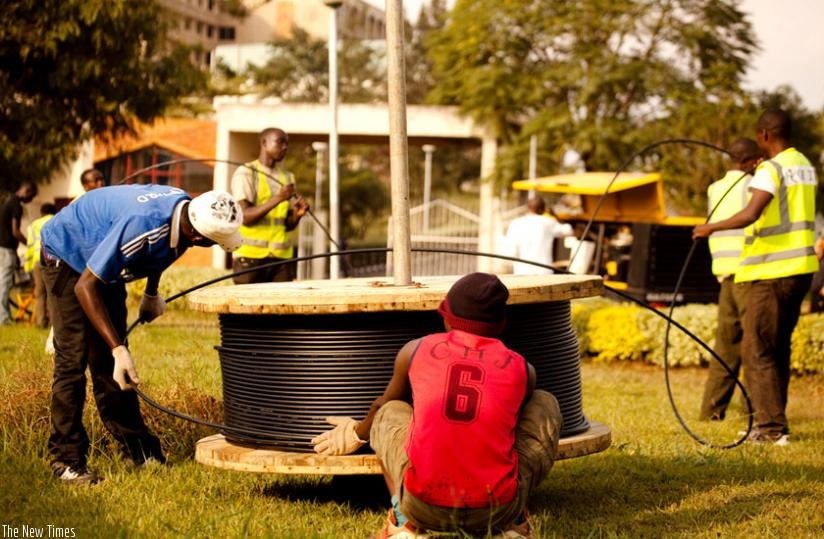More than 8,000 households in Kigali’s suburbs are set to receive internet connection through fibre network provided by Liquid Telecom, a multinational in the telecom industry.


More than 8,000 households in Kigali’s suburbs are set to receive internet connection through fibre network provided by Liquid Telecom, a multinational in the telecom industry.
The development will see homes connected to Internet via fibre cables for the first time in the country, in the initial phase of the technology’s rollout.
In an exclusive interview with The New Times, yesterday, Liquid Telecom Group chief executive Nic Rudnick said the fibre network for the first phase had already been built and was awaiting launching in the coming weeks.
The firm made an investment of over $30 million for the initial phase for the technology dubbed "Fibre to Homes.”Rudnick said they had a target to reach triple the initial phase’s number (24,000) in subsequent phases by the end of the year.
"It will be an open space network where people will be able to buy connectivity to their homes using our network or from other service providers,” he said.
The fibre technology introduction is aimed at providing high volume and fast connectivity at reduced cost at a time when internet users are grappling with high costs from wireless technologies such as 4G.
The technology offers high speed internet for high volume usage at lower costs compared to wireless technologies, where consumers are charged per usage.
"For high volume users there is no question that fibre is an outstanding solution in terms of speed and volume they can carry,” Rudnick said.
"Under fibre network we will provide usage priced per month as opposed to consumption. Utilising wireless technology one has to pay for the data they use which is relative to what you are downloading leading people to avoid heavy downloads.”
The pricing model is meant to encourage clients to use the internet for enterprises, education and content, Rudnick said.
Cost-effective
Giving an example of household Internet consumption in relation to costs in European and Asian markets, Rudnick – who features among top 100 most influential personalities in global telecoms industry – noted that wireless technologies cost an average of $1,000 (about Rwf724,000) per month, while fibre connection cost a fraction of the amount.
The technology comes at a time when Internet access and rollout heavily rely on wireless technologies, which a section of Rwandans have said come at a high cost, thereby limiting accessibility.
However, Rudnick said theirs is not necessarily a competing technology but a supplementary one that aimed at providing affordable access, capacity and large volumes for fixed consumers.
"It is supplementary because 3G and 4G are wireless technologies and while they offer advantages in respect to mobility, they have disadvantages in terms of capacity and through put,” he said.
That way, he said, Rwanda would be free of risks associated with single monopolistic technologies, and it would foster innovation and competiveness amongst retailers.
Sam Nkusi, the chairperson of Liquid Telecom Rwanda, told this newspaper that among the suburbs to receive connection in the initial phase include Nyarutarama, Gisozi and Kicukiro with other areas to follow in coming months.
Other countries in the region that have adopted the technology include Kenya, Uganda and Zambia.
editorial@newtimes.co.rw


